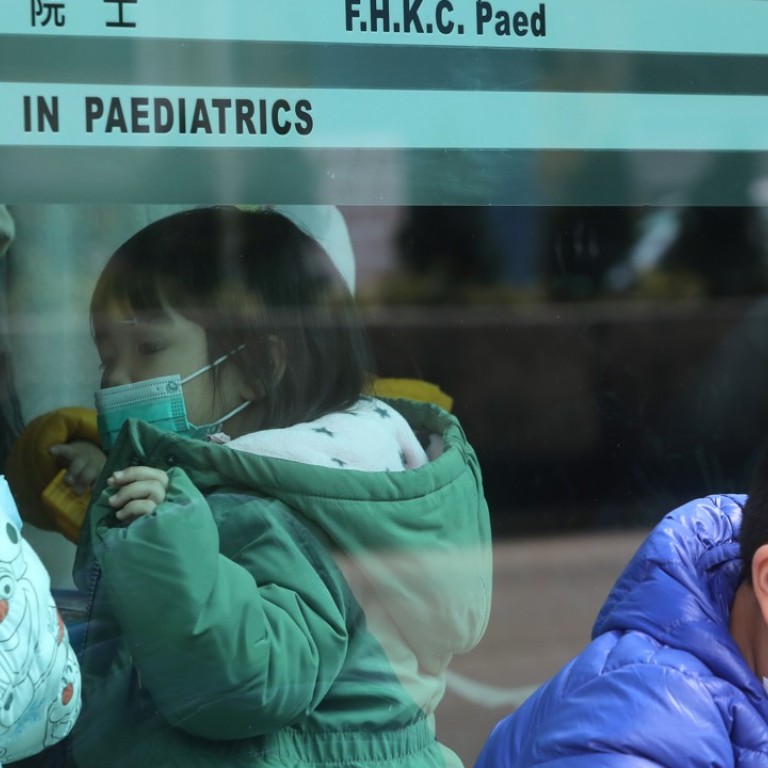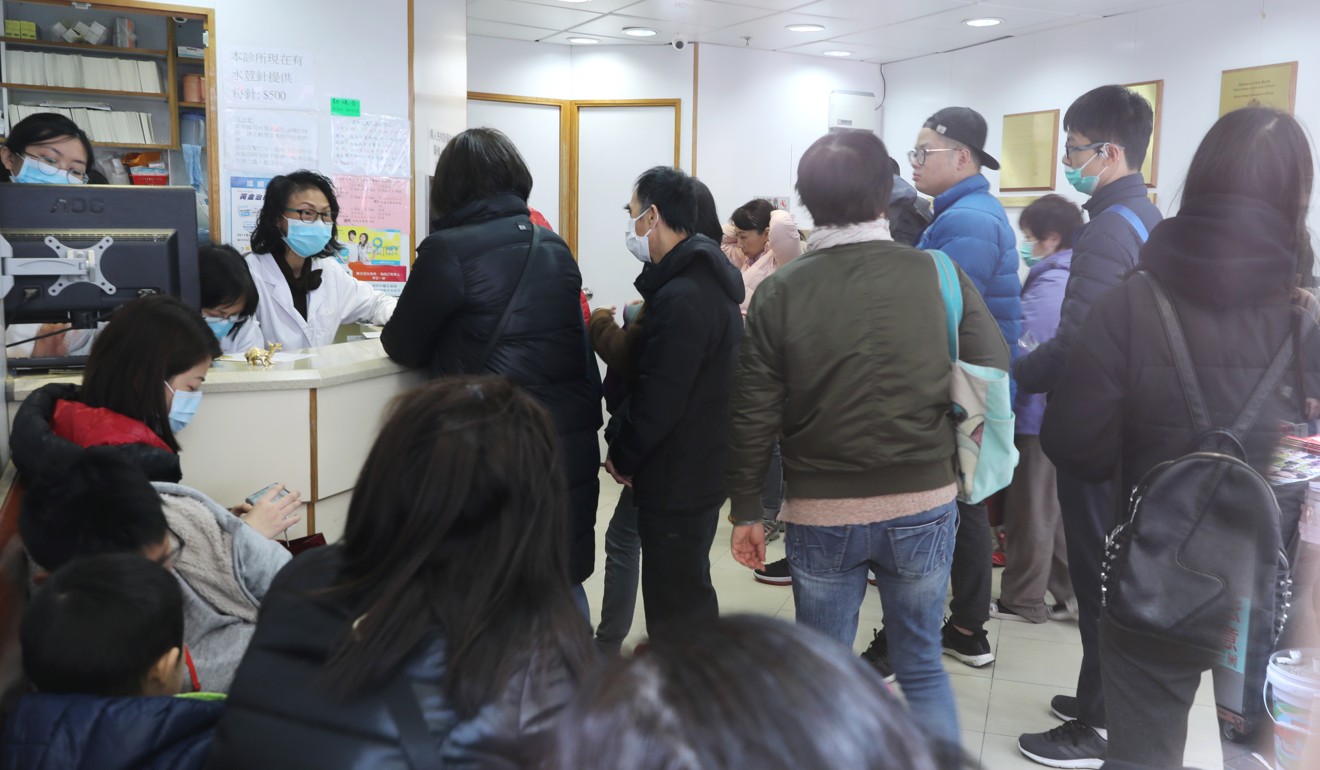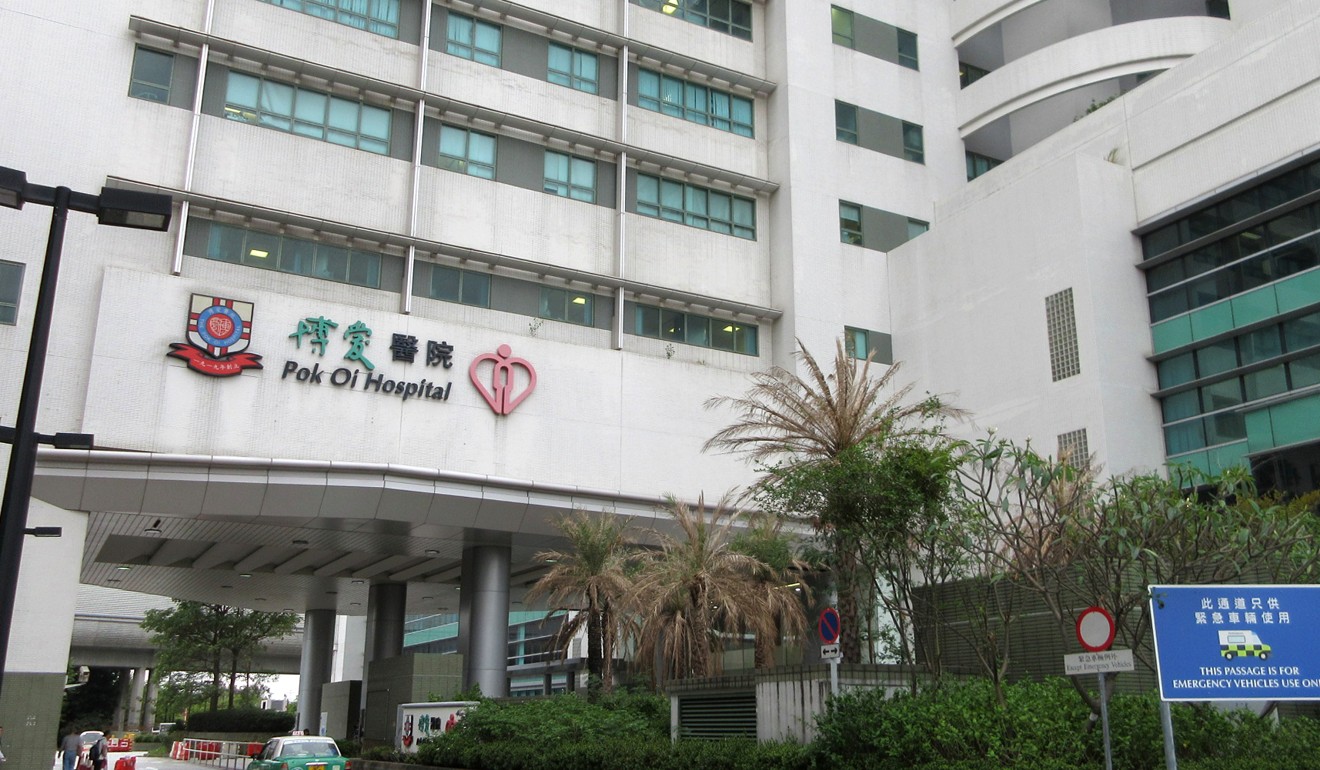
Early school break pays off as flu outbreaks drop at Hong Kong institutions
But Centre for Health Protection says the city is still in the midst of the winter flu peak and the next batch of vaccines will not arrive in time to ease shortage before students head back to classes
Flu outbreaks at Hong Kong institutions have dropped significantly after schools closed in advance of the Lunar New Year holiday, according to health officials who called for continued vigilance as pupils return to classes next week.
Hospitals see rush of patients amid flu surge and end of Lunar New Year break, resulting in waits of over eight hours
But the centre said the city was still in the midst of the winter flu peak and the next batch of vaccines would not arrive in time to ease the shortage before students go back to school. An expert said however there was no need to extend the holiday.
University of Hong Kong microbiologist Dr Ho Pak-leung agreed the closure helped to stem outbreaks but it was not necessary to call for a longer holiday for pupils although he urged vigilance to prevent outbreaks.

Meanwhile, HKU researchers announced their latest study, which found the influenza virus was more transmittable than previously believed as it could be spread not only by droplets, but also by airborne particles.
The team, led by Professor Malik Peiris of the School of Public Health, conducted experiments on ferrets and concluded that fine airborne particles could infect the animal model which was very similar to that of humans.
The team believed the findings were useful for the government to form policy recommendations for the prevention and control of flu transmission.
Hong Kong’s ‘war on flu’ rages on as hospitals brace for surge in patients after Lunar New Year break
On the resumption of school, a spokesman for the centre said: “As schools are collective assembly places, infectious diseases such as influenza could be easily spread among people through their daily contacts.
“To prevent outbreaks of influenza and other respiratory infections, it is of prime importance that children with fever, regardless of the presence of respiratory symptoms, should not be allowed to attend school.”

He said educators should measure and record students’ body temperature every day once classes resumed in a few days, and stressed pupils should seek medical advice and avoid school until 48 hours after the fever had subsided.
The centre issued letters to schools, kindergartens and child care centres earlier this week to remind them about continued vigilance and reinforcement of preventive measures when classes resume.
What you need to know about this year’s unusual winter flu surge in Hong Kong
If an outbreak is suspected, schools should immediately report it to the centre for prompt follow-up, he said.
Public hospitals continued to be overloaded. The overall occupancy rate for public medical wards on Wednesday was 114 per cent – meaning temporary beds had been laid out along the corridors.
Pok Oi Hospital in Yuen Long saw the highest occupancy, at 134 per cent, followed by United Christian in Kwun Tong with 131 per cent.
Another flu pandemic is coming, and the world isn’t prepared
The weekly positive percentage of seasonal influenza viruses among respiratory specimens ranged between 24.28 per cent and 26.95 per cent in the past four weeks, according to the centre’s data.
The circulating flu viruses were predominantly influenza B, a strain that fewer people had antibodies for because it had been inactive for years.
Flu vaccine maker Sanofi Pasteur would deliver 24,000 doses to the city only in mid- or late March to the private market, in which, according to the Medical Association, each doctor would get no more than 10 doses.
Another manufacturer, GlaxoSmithKline, said more than 20,000 doses of vaccine from Germany had arrived in Hong Kong. “[They] will be allocated equally among the public and private clinics as soon as possible,” the firm said.
The company would also supply the city with another batch of flu vaccines, which would be shipped to Hong Kong in mid-March.

